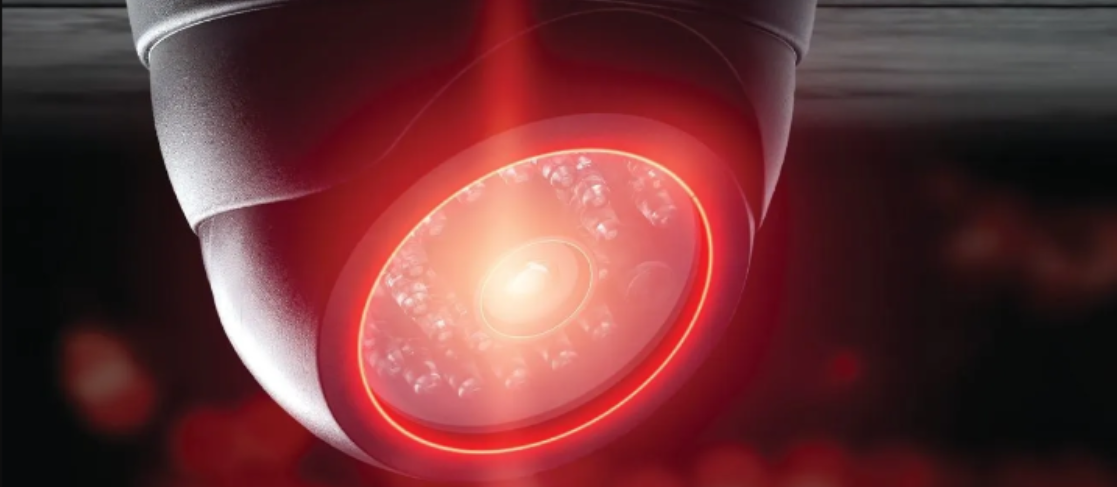Getting it Right the First Time
What’s missing from most contractor’s QCPs

 Twenty percent of skilled craftspeople are within five years of retirement and less than 10 percent of skilled craftspeople are under the age of 26. This will result in an even greater shortage of knowledgeable, skilled construction workers. Quality control training outside of apprenticeship programs rarely exists.
Twenty percent of skilled craftspeople are within five years of retirement and less than 10 percent of skilled craftspeople are under the age of 26. This will result in an even greater shortage of knowledgeable, skilled construction workers. Quality control training outside of apprenticeship programs rarely exists.
Contractors have traditionally only reported quality issues when there is a schedule or design impact and/or request for financial reimbursement. On bid projects, contractors may build into project budgets costs for time and material for damage to finished materials and rework - a cost not seen by owners. On negotiated or time and materials projects, rework is often just hidden.
The loss of craft-level institutional knowledge will have a measurable effect on contractors' ability to deliver quality projects on time, within budget, and with no facility/business impacts to ongoing operations. For the delivery of quality-built projects, owners and contractors both will have to take steps to ensure this institutional knowledge is not lost.
Introducing QCPs
Facility managers and building owners rely on general and specialty contractors, who in turn often hire lower-tier specialty contractors to deliver quality projects. Contractor prequalification processes typically include a simple questionnaire about contractors’ quality control programs (QCPs).
Prevention through design (PTD) is a practice of incorporating safety and health into the design of work premises, tools, equipment, and substances not only for the construction processes but also for the end-user. One example of PTD at work is engaging with hospital charge nurses during the design processes of the nurses' stations and hospital room headwalls. Failure to capture the needs and knowledge of the end-user can and often does result in rework.
Research and experience show us that projects benefit from in-depth evaluations of a contractor's QCP. This evaluation should focus on the methods contractors implement to prevent rework and warranty claims, not just evaluating contractors’ claim costs. One key QC tool is ensuring the transference of the skilled craft person’s knowledge from journey worker to apprentice.
The ever-increasing focus on quality in construction has led many organizations to recognize there is value in managing quality in the same manner that safety and loss prevention is managed. Compliance-driven safety and health programs historically measured “safety” excellence through contractor's insurance and OSHA recordable rates. If an event did not meet OSHA recordable criteria, we were measuring excellence through the absence of events. Concentrating on OSHA injury rates and insurance claims costs alone does not capture the true financial or business interruption costs. Progressive pre-qualification of contractor safety efforts has advanced to include evaluations of safety programs, safety plans, safety orientations, job hazard analysis, employee training and weekly craft safety meetings.
The same challenges and opportunities exist with the evaluation of contractor’s QCPs, which typically only measure insurance claims and paper-driven processes. Best-in-class QCPs mirror safety programs via their processes, policy development, training (transfer of knowledge) and implementation.
The goal of both the safety and QCPs is to prevent losses - both with the prevention of injuries, and the reduction of rework and facility or project impacts.
The real costs of rework and facility impacts
How does an owner know the cost of rework when most likely the owner or FM does not even know an event occurred?
To advance the safety awareness of senior management, safety professionals in construction companies have been identifying the “hidden” costs of accidents by tracking hours consumed in investigations, training, repairs, etc. (see Figure 1).
A near miss is an unplanned event that did not result in injury, illness, impact or damage but had the potential to. Progressive contractors now require reporting of near misses even though there may not be any personnel or financial losses. This is due to the belief that near-miss reporting, investigation and sharing of outcomes can result in the prevention of an accident or injury that will result in personnel or financial losses. The key to this prevention is the sharing of information during weekly toolbox talks or other crew-level meetings.
Like near-miss injury reporting, poor-quality installations or craftsmanship (incidents) are often not reported to owners nor insurance companies, let alone any form of accounting of the financial impact. If quality events are not measured, the likelihood of repeated errors increases. To advance awareness of the impact on projects, the same tracking methodology of injury and accident costs can be used to report and track rework costs. (see Figure 2).
Studies have found that direct costs of rework range from 0.05 percent to 20 percent of contract value. Indirect costs are as high as six times the direct costs. Field-level supervisors are sometimes unaware of the hidden costs of their incidents.
 Key components of an effective QCP
Key components of an effective QCP
Commercial general contractors are expected to have an effective QCP. These programs typically mirror effective safety and health programs. Over decades, the construction industry learned to appreciate and value the two-way communication with the craft workers through site safety committees and weekly crew safety meetings.
Consistent and meaningful communication and its role in rework prevention
The construction industry has experienced unprecedented labor shortages for the past several years. Retention of early career construction trade workers’ six-year completion rate(s) of apprentices is at a low of 53 percent. Further exacerbating the upcoming shortage of experienced trade workers reaching retirement age during these same six years.
Ongoing training and development of qualified construction trade workers happens on the job. To train and retain new industry entrants, site leaders must ensure civil, respectful, consistent and meaningful communication is occurring. The sharing of lessons learned is critical to culture development, ongoing training and professional development of construction craft workers.
Construction safety procedures have included toolbox talks as a method of communication, training, and overall information sharing for many years (decades). These toolbox talks also serve as opportunities for team building, story sharing and proactively driving safety culture. QCP communications typically occur in leadership meetings and through procedural documentation, excluding craft workers. Most QCPs do not incorporate communication with and training of craftworkers in this manner or at this level.
 Do QCPs mirror safety program near-miss reporting?
Do QCPs mirror safety program near-miss reporting?
Near-miss reporting is a critical component of progressive workplace safety and health programs. The reporting of near misses presents the opportunity to identify constraints, miscommunications, training or procedural gaps. A psychologically safe environment with proactive near-miss reporting can alleviate leadership’s pressure to have all the answers.
For decades, loss control professionals knew there was a symbiotic relationship between quality and safety. Academic research now confirms this relationship. Therefore, it is logical to implement a quality near-miss reporting system. Often times, contractors’ QCPs are consistent with inspections and claims defense posturing like compliance-driven safety programs. However, most QCPs should have a stronger focus on prevention.
Engaging craft workers improves project safety and reduces craft injuries, which in turn reduces increased project costs and claims potential. Contractors should follow this same model for their QCPs. The motto, “See something, say something” that has been used in safety can easily be applied to quality control. To ingrain an “install it right the first time” philosophy contractors should expand their QCPs to include:
- the sharing of lessons learned with craftworkers.
- installation errors (rework), findings and costs
- engagement of manufacturer’s representatives with craft workers to train and demonstrate correct installation procedures.
- engagement and partnership with architects and engineers on critical installations, including onsite visits. (i.e. temporary bracing for structural steel, HVAC, etc.)
Safety and quality in construction contracts
Training and certification are key components contractors rely on to meet contract requirements. This includes training, certifications, and continuous education. Most trade workers’ training is on-the-job training, making the sharing of quality information at the trade worker level critical. The question is “How can trade-specific, craft-level ongoing quality training be completed?”
Generally, contractors do an acceptable job training craft workers for safety exposures to prevent injury. However, the authors have identified very little on-the-job quality control training post-apprenticeship.
AIA recommends that training and certification to be a key component of QCPs in construction contracts. The challenge is, how do contractors implement quality control training for frequently changing crews? There are a few ways to overcome these challenges:
- Request for Proposals (RFPs) should include the general contractor’s QCPs to identify prevention steps/programs to reduce rework (with examples).
- The prequalification process of contractors should have less emphasis on claims defense and more emphasis on prevention of rework, ideally specific to this project.
- Require contract language in contractors’ QCPs to include weekly, trade-specific, craft-level quality training.
- Require submission of project-specific QCP(s).
- Site-specific QC plan submitted with the GC’s RFP response
- Require pre-mobilization QCPs and review meeting with all contractors
As the industry has proven over the last few decades, improved project ‘safety’ happens when skilled craft employees are engaged. owners, facility managers and contractors all benefit from focused frequent efforts on engaging the craft employees in quality control. Engaging the people doing the building in project safety and quality reduces both injuries and rework. This benefits budget, schedule, and worksite morale because skilled construction professionals strive to build it right the first time.

Brian Clarke is a graduate of Central Washington University and a Certified Safety Professional with more than 35 years’ experience in the construction safety/risk management industry. Clarke is active with CWU’s Industry Advisory Council (past chair) and is a past board of directors member of the American Society of Safety Professionals (ASSP) and has authored various articles in ASSP’s Professional Safety Journal and chapters in safety and health textbooks.

References
“Ensuring Excellence: Quality Control in Construction Contracts.” Learn, Accessed 10 May 2024, www.learn.aiacontracts.com/articles/ensuring-excellence-quality-control-in-construction-contracts/
Furst, Peter. “Construction Quality Management.” IRMI, IRMI, 23 Oct. 2015, www.irmi.com/articles/expert-commentary/construction-quality-management
“Quality Management for Construction Projects.” USACE ..., Accessed 10 May 2024, www.swg.usace.army.mil/Portals/26/docs/Constructionpercent 20Qualitypercent 20Management/MOD6.pdf
“8 Wastes.” Lean Construction Institute, 24 Jan. 2024, www.leanconstruction.org/lean-topics/8-wastes-of-lean/
Kelly, M. (2022). Supporting a Diverse Construction Workforce. Portland, OR
Matthews, J. &. (2022, 05 19). "Why Does Rework Occur in Construction? What are Its Consequences? And What Can be Done to Mitigate Its Occurrence?" Science Direct Engineering, 18, pp. 246-258
Porath, C. (2016). Mastering Civility: A Manifesto for The Workplace. New York: Grand Central Publishing
Taylor, Angela. “Building Excellence: The Benefits of Cross-Training your Craft Professional Workforce.” Construction Citizen, 26 October 2023, Building Excellence: The Benefits of Cross-Training your Craft Professional Workforce | Construction Citizen
Wanberg, C. Harper, M. Hallowell, S. Rajendran (2013). Relationship between Construction Safety and Quality Performance, Abstract, https://ascelibrary.org/doi/full/10.1061/(ASCE)CO.1943-7862.0000732
Andler MSET, CHST, CIT, CRIS, M. Research Studies: The Many Costs of Construction Rework. Accessed May 25, 2024. Research on Rework | Quality Safety Times
Love, P, Matthews, J, Porter S, Fang, W State of Science: Why Does Rework Occur in Construction? What Are Its Consequences? And What Can be Done to Mitigate Its Occurrence? Engineering, Volume 18, 2022, P. 251. ISSN 2095-8099, (https://www.sciencedirect.com/science/article/pii/S209580992200426X).
Relationship-between-Construction-Safety-and-Quality- ..., scholar.archive.org/work/ykngfrja3jcshbspwa22n47mme/access/wayback/www.frontlinecoach.com.au/wp-content/uploads/2014/06/Relationship-Between-Construction-Safety-and-Quality-Performance.pdf. Accessed 16 July 2024.
Read more on Operations & Maintenance , Project Management and Performance & Quality
Explore All FMJ Topics









